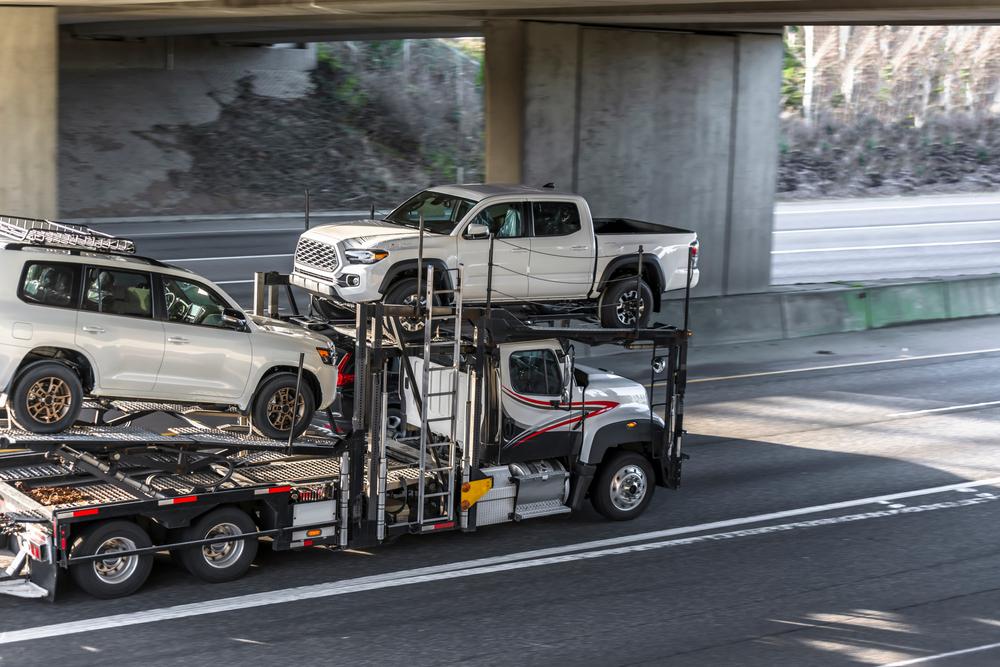How Much Does It Cost to Ship a Car from NYC to Orlando?
Car shipping is a helpful service for those who need to transport their vehicle over long distances rather than driving it themselves.
With companies dedicated to safely transporting cars across the country or overseas, shipping has become a convenient option for relocating, selling, or purchasing a vehicle in another location.
However, choosing the correct car shipping method and company requires understanding the various cost factors. This blog post will provide an overview of car shipping methods, the major elements that influence pricing, comparisons of top shipping companies, and tips for getting the best deal.
The blog post will first explain the two primary car shipping methods - open transport and enclosed transport - outlining the pros and cons of each. It will then dive into the key factors affecting pricing, distance, carrier availability, vehicle size, seasonality, insurance, and timeframes. Top car shipping companies, services offered, and pricing models will be compared.

Brief overview of car shipping as a service
Car shipping services allow vehicle owners to avoid lengthy road trips and save on fuel, lodging, and rental car costs by having their cars transported professionally.
Licensed carriers pick up the vehicle from the owner's location using enclosed trailers or open auto racks. They then deliver the car to the designated destination within a specified timeframe.
Shipping is beneficial for moving long distances, international relocations, vehicle sales between private parties in different areas, transporting classic or high-value specialty cars, and other situations where vehicle driving is impractical or desired.
Importance of understanding the costs involved
While shipping typically costs less than the time and expenses of driving, the pricing can vary widely depending on numerous factors. Consumers need to educate themselves on how distance, season, vehicle type, and insurance coverage impact the bottom line cost. Getting multiple quotes from reputable carriers allows comparisons to find the best value. Without research, one could easily overpay or select a shipping method that doesn't suit their needs.
This blog post previews the main aspects that determine pricing to help consumers make informed decisions.
Car Shipping Methods
Open transport and enclosed transport
The two main methods for transporting cars are open transport and enclosed transport. Available transport, called auto rack transport, involves securing vehicles to metal racks outside enclosed trailers.
Cars are individually strapped onto the racks with nylon straps and heavy-duty equipment. This method is generally the most affordable option but leaves vehicles exposed to weather elements like sun, wind, rain, or snow, depending on the time of year.
Enclosed transport ships' cars inside enclosed trailers or containers similar to semi-truck trailers. Vehicles are protected from outdoor conditions with the entire enclosure.
While enclosed shipping offers greater security and comfort, it tends to cost more than open transport due to smaller loading capacity per trailer and higher operator expenses. Enclosed transport is usually recommended for expensive, exotic, classic, or specialty vehicles where protection from elements is essential.
Pros and cons of each method
Open transport pros include lower base rates since more vehicles can be shipped per load. It also allows for door-to-door tracking of the vehicle throughout transit.
However, the cons are that cars may accumulate minor exterior scuffs or scrapes from straps or weather exposure. Paint oxidation from sunlight is another risk.
Enclosed transport pros are protection from rain, snow, dust, or bird droppings that could soil or damage exteriors. Interiors also stay cleaner.
But cons include reduced vehicle capacity per trailer, driving up the per-vehicle price. Strict mileage and time restrictions also apply compared to open racks for unloading flexibility.
How each method affects the cost of shipping
Open transport rates are, on average, 15-30% cheaper than enclosed methods. However, the risks of cosmetic damage must be weighed against the higher enclosed pricing.
Distance is another factor, with cross-country enclosed moves running $500-1,500 more than open rack equivalents depending on origins/destinations. For shorter 1,000-mile trips within one region, the pricing gap may only be $100-300.
Overall, enclosed transport offers greater assurance but at a higher cost, while open racks deliver a lower baseline price with more exposure risk to consider.

Factors Affecting Car Shipping Cost
Here are some factors that typically influence car shipping costs within the US:
Distance and location specifics for NYC to Orlando
One of the main determinants of car shipping costs is distance. The longer the journey, the higher the rates generally are.
For example, shipping a standard-sized car from New York City to Orlando would range from $800 to-1,200 depending on the chosen method and time of year. A breakdown of approximate NY to FL costs could be:
- Open transport: $800-1,000
- Enclosed transport: $1,000-1,200
- Additional $100-200 for popular holiday weeks
- This 1,100-mile route involves transport through multiple states, requiring multiple tractor-trailer driver handoffs and fuel stops, accounting for the higher baseline price versus shorter regional trips.
Carrier availability and how it influences pricing
The supply and demand dynamics between carriers and shippers also impact rates. During peak moving seasons in summer, carriers are in high demand, allowing them to increase pricing slightly.
In off-seasons like winter, when fewer long-distance shipments occur, companies may offer discounts to attract more business and keep drivers and equipment active.
Real-time market forces that affect carrier capacity, like trucking regulations, gas prices, or even severe weather, can temporarily influence rates to go up or down in the short term.
Monitoring multiple quotes throughout the year ensures getting current pricing.
The impact of vehicle type and size on cost
More significantly, heavier vehicles naturally take up more space and attract higher costs due to their size and weight. For example, shipping a standard small-to-midsize sedan would typically be 15-30% cheaper than transporting a full-size SUV, truck, or large luxury sedan.
Factors like vehicle width also matter - anything over 8 feet wide requires a wider "super single" trailer at an upcharge. Shipping an exotic, high-value, classic/antique, or recreational vehicle requires enclosed space and protective handling, driving higher rates.
Seasonal variations in pricing
As mentioned, popular moving seasons from May to September generally command higher prices from carriers as demand peaks.
But also notable is that December- February offers mild discounts of around 5-15% as shippers have fewer relocation assignments over winter.
The best time for value is late fall through early spring when demand isn't highest. July-August typically represents the peak summer season with the most potential for companies to tack on holiday surcharges.
Monitoring quotes throughout the year exposes such seasonal price adjustments.
The role of insurance in shipping costs
Insurance requirements vary by company, but complete coverage protection from loss or damage is highly recommended for client peace of mind. Without insurance, shippers assume all liability if the unforeseen occurs.
Basic insurance runs $300-500 on average, while adding overall value coverage raises rates accordingly.
For example - insuring a $50,000 luxury vehicle for comprehensive protection up to its total value would likely be $800-1,200 or more versus minimal coverage. Understanding coverage details and assessing risks before finalizing transportation contracts is smart.

Timeframes and their effect on cost
Many factors dictate schedules, but expedited delivery generally demands premium pricing.
A standard transit time of 5-10 business days keeps pricing lower versus urgent 1-3 day service, which may be 2-3 times as expensive depending on location. Stationary car shipping, where transport takes 10+ days, allows for discounting lower baseline costs. Communicating realistic timeframes secures the best possible rates.
Impressively fast 1-2 week coast-to-coast service remains affordable with top-rated companies performing seamless logistics.
Final Thoughts
Successfully shipping a car across long distances requires understanding the various cost factors. Distance, vehicle type, season, available carriers, insurance needs, and requested timeframes influence final pricing. While quotes may initially seem high, breaking down the expenses provides valuable context.
This overview of primary shipping methods, key cost determinants, and company comparisons empowers vehicle owners to make informed choices.
Booking early, vetting carriers thoroughly, minimizing risk where possible, and negotiating the best value for individual transport requirements can ensure a safe and cost-effective car shipping experience from NYC to Orlando or beyond.
Need help shipping your car from New York to Florida? Trust the transportation experts at A1 Auto Transport.
Don't risk wear and tear or accidents from driving long distances yourself. Let the professionals atA1 Auto Transport handle your transportation needs.
Get afree quote!
Thanks for the comprehensive breakdown on car shipping costs! Understanding factors like distance, vehicle type, and timeframes is crucial. If you're considering a cross-country move, United Car Transport is a reliable choice. Their expertise in cross-country auto transport and heavy equipment shipping ensures a smooth journey for your vehicle. Don't compromise on quality – choose United Car Transport for a stress-free and secure transportation experience.
ReplyDelete